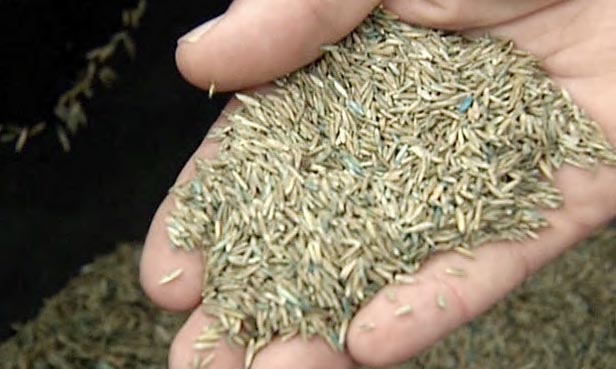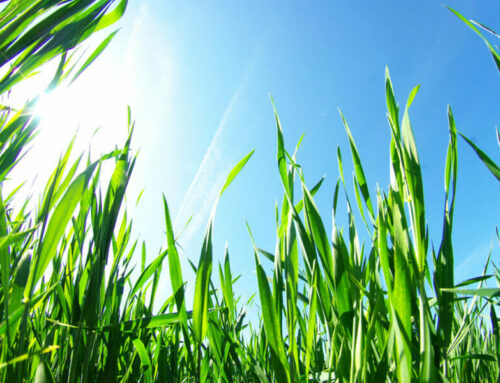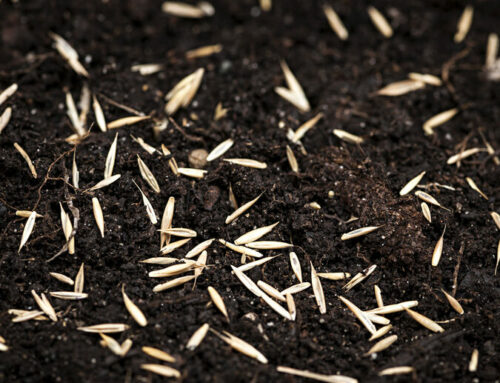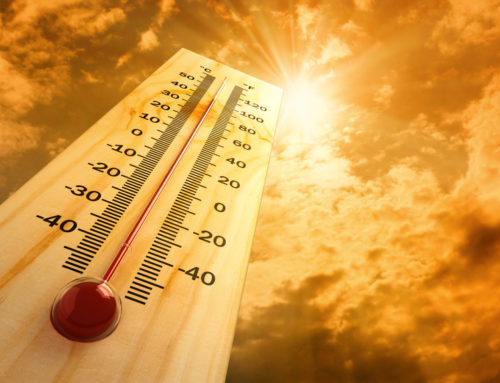Planting grass seed…. don’t just spread it and forget it!

How to Plant Grass Seed – Tips to Seeding your Lawn.
There are several key factors involved for successful seeding and many attempts fail because they are often overlooked. The most common mistake is spreading seed on top of the soil surface and not actually planting it into the soil. In fact, the term “planting” itself is synonymous with inserting, embedding or setting in.
Here are some basic fundamentals to consider in order to be successful when seeding your lawn this year.
Timing: Mid-August to early September is the ideal time for seeding lawns in northern Illinois. It allows the grass seed to germinate before October frosts and then mature over 2 cool/wet seasons before going into a hot summer. Dormant seeding, occasionally done by professional groundskeepers, is the most difficult seeding technique and is not suggested.
Late April to mid-May would be a second choice but be aware that seeding in late spring through mid-summer has its challenges because the summer heat is hard on our cool season grasses. Grass that’s planted in the spring is generally not mature enough to handle hot and dry conditions in the summer and needs to be watered regularly during these periods in order to survive.
Seed Type: Take into consideration whether these areas are in full sun, partially shaded, or heavily shaded (some areas may be too shaded for any type of quality turf). Also factor in traffic volume of the areas as some grass types are more delicate than others. Choose a seed blend with a high germination rating and low percentage of weed seeds which is noted on the label.
Technique: After you’ve determined the type of seed that’s best, you must then figure out what technique will work best for your situation. Grass seed needs to be buried into the soil in order to germinate properly. Many seeding attempts fail because the seed is sprinkled on top of the soil surface and left uncovered resulting in poor seed to soil contact. This condition also leaves it vulnerable to rapid evaporation, washout and loss from birds feeding on the seed.
Aerating and over seeding is a popular notion, but it’s a very ineffective technique. It has a very low success rate due to the lack of seed soil contact and is not recommended. Most seeds remain on the soil surface and the seeds that do fall into the core holes are buried too deep and cannot get the sunlight needed in order to survive.
The best technique for repairing existing lawns is slit seeding where a machine slices grooves into the soil (about 1/8” – 1/4” deep) and drops the seed directly into the grooves giving them maximum seed/soil contact. This technique mimics farming methods. These machines used to be popularly known as slit seeders, they are now ironically referred to as over seeders.
Other techniques for larger bare areas include topdressing with a thin layer of topsoil, peat moss or compost mulch, hydro seeding or lightly tilling areas to make a seed bed.
Aftercare: Once the seed is properly planted it needs to be covered over with some type of protective material. Examples include seed starter mulch, hay/straw or a mesh seed blanket. It then needs to be watered regularly for at least 6 weeks. Some seed types take longer than others to germinate (some within 5 days, others within 14 days) so it’s very important to be diligent. Continue to mow the lawn regularly to allow sunlight to reach the new grass plants as they grow. Limit the amount of traffic on the seeded areas during the establishment period and never apply lawn care products to the areas until they are well established and have been up and mowed 3-4 times.
Sod: Sod is a great way to have an instant lawn but it is not good for repairing otherwise seeded areas in your lawn. It will always look different and stick out from the other grass plants around it, unless you’re repairing an already sodded lawn.
As with seed, newly sodded lawns will need regular watering for the first 6-8 weeks of its existence and also will need to be watered during hot and dry periods throughout its first few summers. Be careful not to overwater your sod. Overwatering essentially drowns your lawn by preventing oxygen from reaching the new roots as they grow.
Sodded lawns should be aerated regularly after its first year to promote root growth and keep thatch layer under control. Sod naturally comes with an established thatch layer that can harbor insect and diseases and needs to be carefully monitored and cared for. Proper fertilization techniques are especially important to the sods’ overall health.
If you’re looking to have a healthier lawn this year beyond seeding don’t hesitate to CONTACT US today! We’ll help you achieve and maintain a healthy, weed free lawn year after ever changing year. After all, “it takes more than just lawn treatments…. It takes a partnership”. – Turf Techs Inc.




